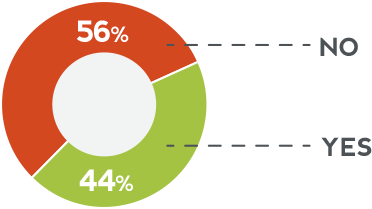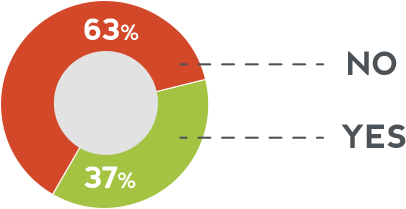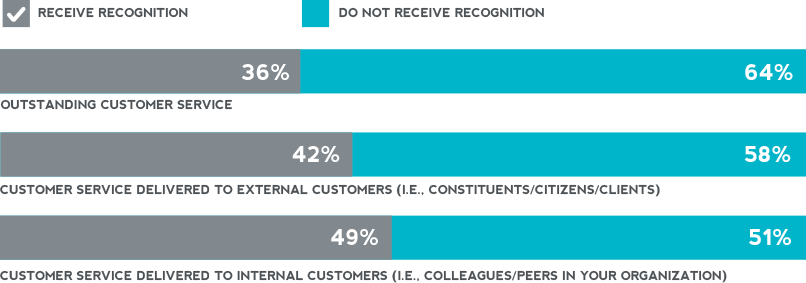Report
Improving customer service in federal government: Measurement

Less than half of federal employees say their agency measures customer service effectiveness, exposing a critical gap—and a crucial first step.
Eagle Hill Consulting recently undertook a survey of federal employees to gain a straightforward perspective on the challenges and opportunities for improving government customer service—from those operating right at its core. Referencing OMB Circular A-11 Section 280’s customer experience maturity model as our framework, Eagle Hill is providing a series of recommendations, based on our discoveries, for agencies to apply right away.
OMB CIRCULAR A-11 SECTION 280: WHAT IT MEANS FOR GOVERNMENT CUSTOMER SERVICE
OMB Circular A-11 Section 280 gives guidance for agencies to enhance the customer experience (CX). By focusing on improvements in five core functions of the CX maturity model—measurement, governance and strategy, culture and organization, customer understanding, and service design—it’s intended to make the CX across government more consistent, comprehensive, and robust.
Source: OMB Circular A-11 Section 280
Among our most striking findings, while federal employees hear plenty of messages about the importance of customer service, they also report real gaps in the key support structures that would help them deliver it.So what’s a federal manager to do? Fortunately, Eagle Hill’s data holds answers, too. We will continue to share them with you over the coming weeks.
This article focuses on measurement, one of the core customer experience functions described in OMB Circular A-11 Section 280. Given that our survey found scant evidence of uniform approaches to measuring customer service performance at either the organizational or individual levels, Eagle Hill sees measurement as a clear starting point for agencies looking to improve.
Federal employee responses indicate need for better measurement
The majority of federal employees say their agency effectively addresses the needs of its customers, yet few have formal ways to prove it. In Eagle Hill’s survey, more than half of the respondents (56 percent) say their agency does not measure customer service effectiveness at all (Figure 1). Nearly two out of three (63 percent) say their federal agencies do not provide them with customer satisfaction scores/metrics (Figure 2).
FIGURE 1. MORE THAN HALF OF EMPLOYEES SAY THEIR AGENCY DOES NOT MEASURE CUSTOMER SERVICE EFFECTIVENESS
Q: Does your agency measure customer service?

Source: The 2018 Eagle Hill Consulting Federal Government Customer Service Survey
FIGURE 2: NEARLY TWO OUT OF THREE EMPLOYEES SAY THEIR AGENCY DOES NOT PROVIDE THEM WITH CUSTOMER SATISFACTION METRICS
Q: Does your agency provide its employees with customer satisfaction scores/metrics?

Source: The 2018 Eagle Hill Consulting Federal Government Customer Service Survey
At the individual level, nearly 20 percent of survey respondents report that no assessment of customer service—either to internal or external customers—is included in their performance evaluations. The upshot of not including this metric? Federal employees who want to know whether they are excelling at customer service or going astray find themselves left in the dark: too many are missing a critical feedback loop that would tell them so. And, those that say they are assessed on customer service are split on what elements are included in their evaluations (Figure 3).
FIGURE 3: FEDERAL EMPLOYEES ARE SPLIT ON WHAT ELEMENTS OF CUSTOMER SERVICE THEY SAY ARE INCLUDED IN THEIR PERFORMANCE EVALUATION
Q: Which of the following are included in your performance evaluation?
(Respondents selected all that apply)

Source: The 2018 Eagle Hill Consulting Federal Government Customer Service Survey
In addition, more than 1/3 (34 percent) of federal employees report receiving no recognition whatsoever related to customer service (Figure 4). In other words, agencies are relying heavily on their employees’ self-motivation for excellence in service delivery—a finding with concerning implications not just for service, but for employee morale as well.
FIGURE 4: MORE THAN HALF OF FEDERAL EMPLOYEES SAY THEIR AGENCY DOES NOT RECOGNIZE THEM FOR THEIR CUSTOMER SERVICE EFFORTS
Q: Which of the following do you receive recognition for in the workplace?
(Respondents selected all that apply)

Source: The 2018 Eagle Hill Consulting Federal Government Customer Service Survey
It would be nearly impossible to overstate the impact of an engaged front line. As noted by authors Chris DeRose and Noel Tichy in a 2013 Harvard Business Review article, “by putting power, resources and trust in the hands of front-line personnel…an elite group of companies has enabled their employees to more rapidly address customer problems, anticipate unarticulated needs and drive customer-facing innovation.” (“Here’s How to Actually Empower Customer Service Employees”). Just as in the private sector, empowering and acknowledging the employees who deliver government customer service encourages those employees to care about the outcome. It stimulates creative problem solving and a genuine desire to help, which in turn helps build citizens’ faith in their government.
Measure by measure, service gets better
Eagle Hill suggests that governments looking to take a cue on customer service from the private sector would also do well to adopt one of its primary axioms: if you don’t measure it, you can’t manage it.
Measurement is the foundation of improvement. Customer service has multiple facets—which ones in your agency are already sparkling? Which ones need polish? Federal agencies asking employees for improvement without the guidance that metrics provide are asking employees to hit targets in the dark.
But it’s also important to remember that collecting data is not the same as acting on it. Staff need more than just performance expectations, they need specifics and they need the training to support their achievement. (A recent Eagle Hill opinion piece by Jack Kelley, “What’s Your Blue Line?: Measuring what matters most to your business,” explains how making performance measures simple, visible and actionable makes them effective. Find it here.)
A great starting point for governments would be to assign responsibility and accountability for customer service at the front lines by instituting customer service metrics and incentives into performance management evaluations and career planning at every level of the organization.
Then, when employees hit or exceed their customer service mark, they should be shown the value of their efforts through a formalized reward system. Scarce resources that limit the size of the government workforce mean every employee must be fully engaged. Seeking out, acting on, and rewarding employee ideas will ignite your customer service efforts while contributing to an improved workplace environment (and, longer term, agency recruiting and retention efforts).
Methodology
The 2018 Eagle Hill Consulting Federal Government Customer Service Survey was conducted online by Government Business Council between June and July 2018. The online survey included 625 respondents from a random sample of respondents across the Federal Government (including civilian and Department of Defense agencies).
Go here to follow the series.

